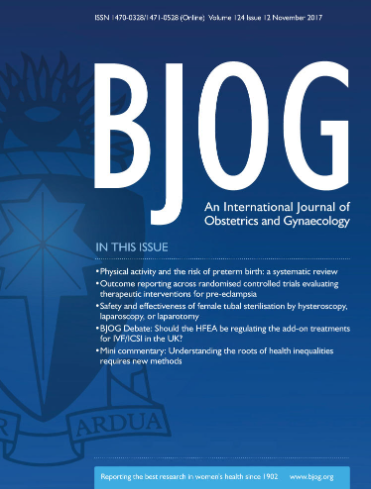Postpartum Cardiovascular Health in African Women Following Pre-Eclampsia: A Prospective Cohort Study
Abstract
Objective
To investigate the prevalence of hypertension and cardiovascular dysfunction 1 year postpartum in Black African women who experienced pre-eclampsia in a low-resource setting in Uganda.
Design
Prospective cohort study.
Setting
Tertiary referral hospital in urban Uganda.
Population
Pregnant women who developed pre-eclampsia between 2019 and 2021, matched to normotensive controls with maternal and gestational age.
Methods
Sociodemographic, clinical and laboratory data were collected at recruitment and 1 year postpartum. Baseline characteristics and incidence rate ratios were calculated to assess risk factors for developing hypertension. Multivariable conditional Poisson regression adjusted for matched study design was used to analyse outcomes.
Main Outcome Measures
The primary outcome was hypertension (≥ 140/≥ 90 mmHg) at 1 year postpartum. Secondary outcomes included aortic pulse wave velocity, left ventricular mass index, and left ventricular ejection fraction at 1 year postpartum.
Results
At one-year postpartum, hypertension prevalence was higher among women with pre-eclampsia than controls (36.4% (96/264) versus 4.5% (12/264); aIRR 1.26, 95% CI 1.16–1.36, p < 0.001). Postpartum median aortic pulse wave velocity was increased in women with pre-eclampsia (6.45 ± 0.76 m/s vs. 5.67 ± 0.22 m/s, p < 0.001). Left ventricular mass indexed to body surface area was increased in women with pre-eclampsia (71.7 ± 19.6 g vs. 76.5 ± 23.2 g, p < 0.01). Left ventricular ejection fraction was not influenced by pre-eclampsia (p = 0.35).
Conclusions
In this low-resource setting, black African women with pre-eclampsia had increased cardiovascular risk markers at one year postpartum. Over one-third of women with pre-eclampsia developed hypertension at one year postpartum, emphasising the need for postpartum blood pressure monitoring and early intervention to mitigate long-term cardiovascular risk in this high-risk population.


 求助内容:
求助内容: 应助结果提醒方式:
应助结果提醒方式:


